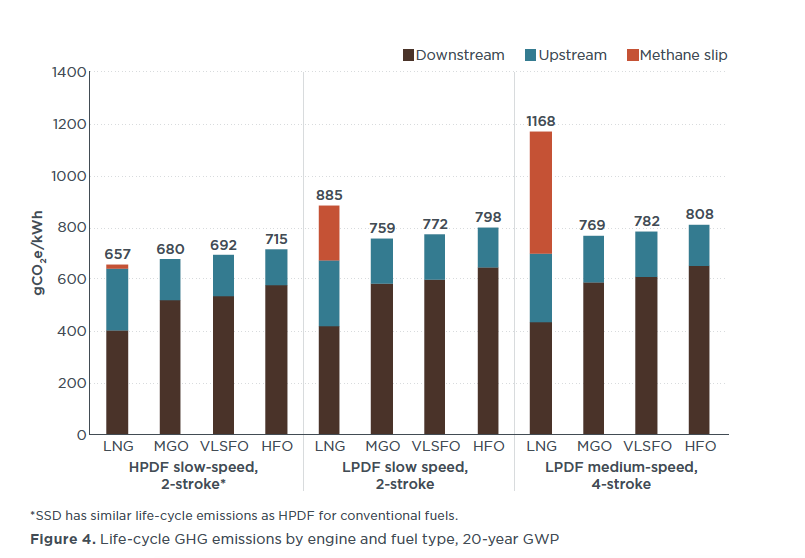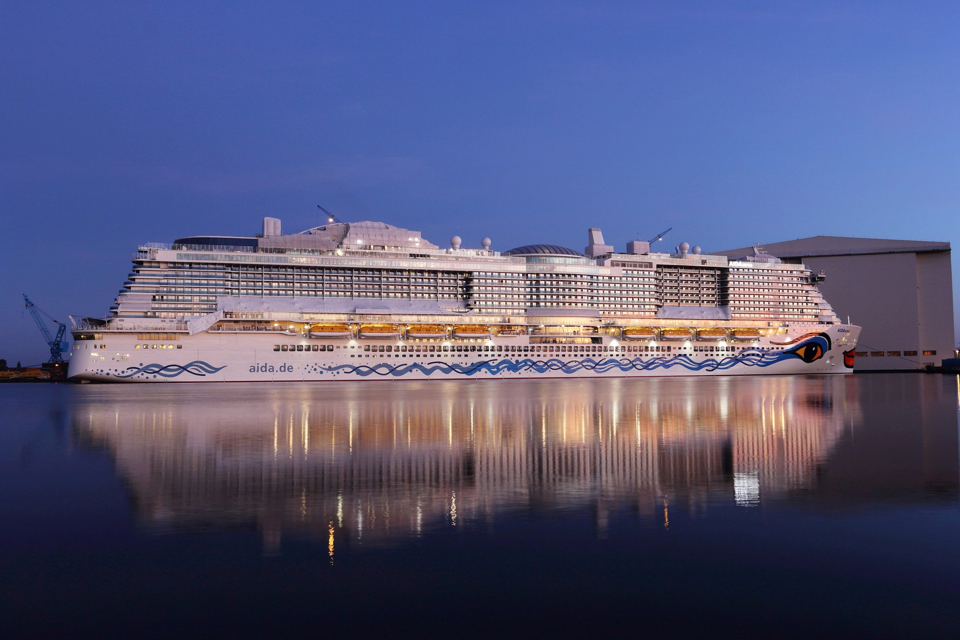The most popular LNG ship engine emits between 70 and 82 per cent more life-cycle greenhouse gas (GHG) emissions over the short-term compared to clean distillate fuels. This follows from a new report from the International Council on Clean Transportation (ICCT).
The report, “The climate implications of using LNG as a marine fuel”, comes as the shipping sector turns to LNG as a purported climate solution. The report was commissioned by environmental organisation Stand.earth.
Methane slip
The ICCT report examines the lifecycle GHG emissions from marine fuels, including the unintentional releases of methane from ship’s LNG powered engines, known as methane slip. The authors found that using LNG could actually worsen the shipping industry’s climate impacts compared to marine gas oil (MGO) when considering the amount of heat these emissions will trap over a twenty-year period. Methane traps 86 times more heat than the same amount of carbon over this period.
Of the 756 LNG ships currently in use or on order, the most popular engine type, by far, is also the worst offender with the highest rate of methane slip, according to data from the ICCT. This engine is especially popular with cruise ships, see the chart from the report below.

Targeting the broader GHG emissions
‘The report shows the need for adopting policies that can reduce the broader GHG emissions of shipping instead of CO2 only, including the well-to-tank emissions of ship fuels,’ says Dr. Elizabeth Lindstad, Chief Scientist at SINTEF Ocean, Maritime Transport. ‘If we fail to include all GHGs and focus only on CO2, we might end up with a large number of ships fulfilling all efficiency requirements, but where the GHG savings are on paper only.’
The Intergovernmental Panel on Climate Change has warned that global GHG emissions must be nearly halved from 2017 levels by 2030 to avert the worst impacts of climate change, and methane emissions from all sources must be cut by at least 35 per cent from 2010 levels by 2050.
Picture (top): AIDA Cruises’ AIDANova is was the first LNG powered cruise shipping the world (by Wessel Blokzijl).








